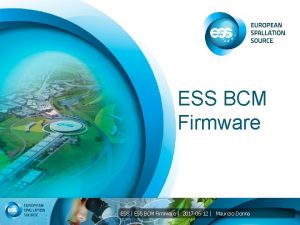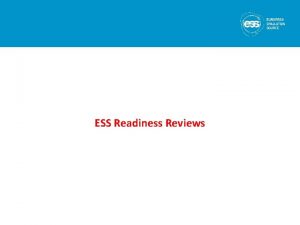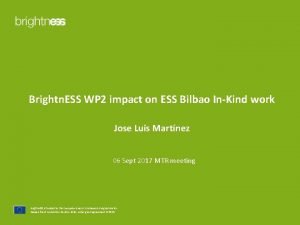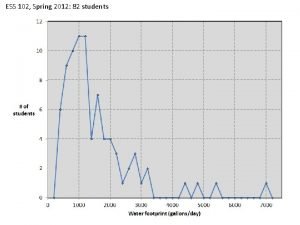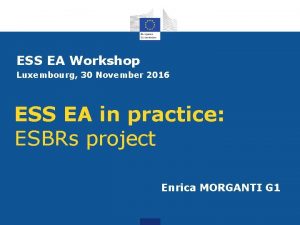WELCOME to KT Case Study ESS KT Case









- Slides: 9

WELCOME to KT Case Study! ESS KT Case Study: SLU 2015

What is KT? • KT stands for Knowledge Transfer • In our case, we can define it as: • ”Transfer of knowledge learned in EMFOL into practical solutions for food production/supply problems in your home countries”

Group work • You will work in groups that mix SLU and UCPH, 3 C and EU • Important: • Make use of your scientific knowledge! • Do NOT focus on political problems!

Procedure • Each group member must first summarise his or her country’s needs • The group must then summarise the opportunities offered by the knowledge that has been acquired during year 1 • The group must then prioritise the needs of the different countries, and choose the one country whose needs best fits the opportunities • The group then prepares an Action Plan for that country

Action Plan • The Action Plan should describe what Knowledge Transfer and Technology Transfer is needed • It should take into account food production, food supply and processing chains and consumer demands • It should have a realistically implementable time frame • It should focus on science, not politics!

Group Presentation • The Group must prepare a 15 -20 min powerpoint presentation of their Action Plan • This will be presented on Friday morning • The powerpoint file must also be emailed to chkn@sund. ku. dk so that it can be uploaded to the EMFOL e. Campus

Individual Report • Each of you must prepare an individual Report describing the Action Plan • You will do this during the first semester of your second year studies • The ECTS is awarded on the basis of this Report • Please follow the ESS KT Case Study Guidelines when preparing your Report

Overview of report • The report should be written as if it was to be read by a governmental or institutional Task Force considering Food Security • Task Force people are usually highly intelligent and can absorb clear messages quickly. They do not have time to read long reports, but they do need data that supports key points • Therefore the report might have: • A clear “Executive Summary” that will fit on one page • Written text of no more than 10 pages • If possible, a clear and self-explanatory figure summarising each of the main conclusions • Supporting data supplied as Annexes.

Content of Report • Short executive summary (1 page maximum) • Brief introduction (you, your EMFOL training, your own country and its food security problems/needs: 2 pages maximum) • A description of the working methods that the group used, including how and why the country to be studied was chosen (2 pages maximum) • A description of the chosen country and its food security problems/needs (2 pages maximum) • A description of the relevant knowledge and technologies that will be useful in addressing these needs, describing the opportunities that they present for the chosen country (2 pages maximum) • A description of the different options that could be incorporated into an Action Plan, and how and why the preferred option or set of options was chosen by the group (2 pages maximum) • A description of the Action Plan itself, including the objectives of the plan, a time-related implementation strategy and a risk analysis (4 pages maximum) • References • Annexes










